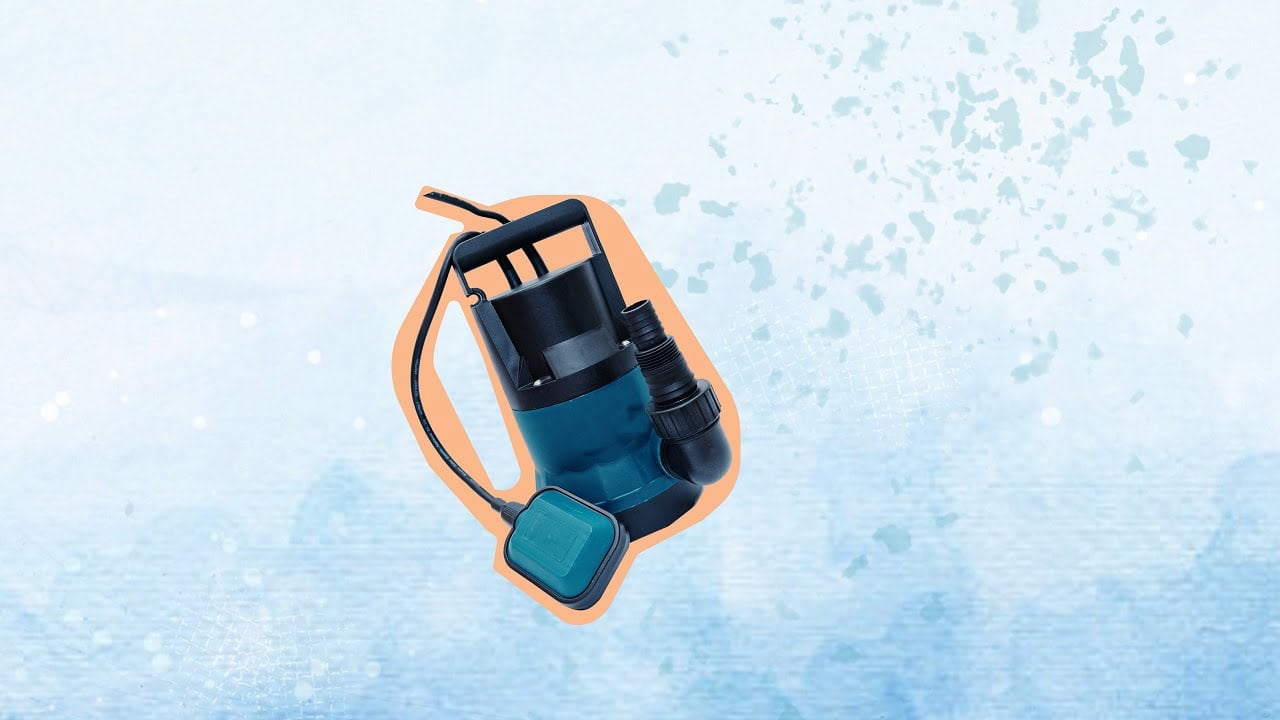Sump Pump Vs Utility Pump | Comparison + Ideas
Sump pumps can be a long-running, non-portable and permanent solution to removing water from places where water fills up frequently. In contrast, utility pumps are portable and versatile water-removing devices that can be used in a variety of situations. No matter where you live, you will likely run into spillage at one point or another. […]

Sump pumps can be a long-running, non-portable and permanent solution to removing water from places where water fills up frequently. In contrast, utility pumps are portable and versatile water-removing devices that can be used in a variety of situations.
No matter where you live, you will likely run into spillage at one point or another. And this is where you can put the best utility pumps or sump pumps to use.
The trouble is, it can be confusing to know which is the right pump for your specific use case. So, to help you gauge which type suits your needs, I’ve reviewed both a sump pump and a utility pump.
Sump Pump

Sump pumps are small pumps that are placed below ground level in order to remove water from places where the liquid can’t be drained. The pump uses a piston to redirect water into a drain pipe, reducing the water level and keeping the area dry. Usually powered by electricity, these pumps are primarily used as an anti-flooding measure and are directly connected to sewer systems.
You can also find sump pumps powered by solar energy if you wish to rely on a cleaner energy source.
Advantages Of Sump Pump
1. Dries A Particular Area
During my time testing the sump pump, it was apparent that the effluent pump is meant to be used in specific areas to prevent flooding. Basements are an obvious place where the pump can be used, but it needn’t be limited to below-surface areas. You may also use them as pond pumps, if need be.
Say a portion of your home is being rebuilt from the ground up, a place where water can damage the construction process. A submersible pump can be put to use to dry the area and keep the construction going smoothly.
2. Keeps The Soil Stable
Something I noticed about the drying capabilities of a submersible pump above the surface is that it can maintain the dryness of the soil. This can be particularly helpful in a construction site, where dry soil can add to the stability of the building. After all, if the soil isn’t dry enough, water damage can lead to serious structural issues for the building.
3. Switches On Automatically
Most submersible sump pumps have built-in float switches that rise with the water level. Once the switch has risen to a certain point, the pump will turn on automatically and begin pumping out the water automatically. So long as the switch hasn’t reset its position, the pump will stay on.
More advanced submersible pumps use an automatic sensor to keep the area dry without requiring a dedicated float switch.
4. High Power
Since sump pumps operate in below-ground locations that are typically the lowest point in a home, they have an appropriately high pumping power. Sump pumps can move water through a pipe several feet above to push it into the drainage system, in stark contrast to most other sewage pumps.
5. Adaptable Pipes
The output connection in sump pumps are purposefully designed to be able to connect to drainage pipes easily. So, you can connect it to a garden hose as well if you wish to redirect the water to a nearby pond or swimming pool.
A diameter that is no less than an inch can be found on most sump pumps, which enables this adaptability.
6. Alerts You About The Water Level
Sump pumps often come with water alarms and features that stop airlocks, making operations smoother and easier. And since they are powered directly by a home’s electrical system, these pumps don’t require any priming before they are ready to be used.
Disadvantages Of Sump Pump
1. Relies On Electrical Power
Something I noticed immediately while using a sump pump is that power outages become a major issue. If you live in an area with heavy rainfall, there’s a good chance that your electricity will go out for quite a while. And since sump pumps rely directly on your home electrical system, they can be rendered useless until power is restored.
During severe weather storms, it could be days before the power comes back on, leaving your basement filled with water until then.
2. Needs A Pit
Sump pumps are installed below the surface, necessitating an opening in the earth under your home, called ‘sump pits’. There are two main issues that stem from this: the effort required and the risk of Radon gas entering your home.
Having a sump pit in your basement to accommodate a sump pump can lighten your wallet significantly and be quite unsightly as well. Regular maintenance can help reduce the visual distraction, but I found it to be not quite as effective as I had hoped.
And lastly, there is a chance that the soil under your home has Radon gas trapped, which may release as the pump is being installed. The gas is a significant health risk and can seriously damage your lungs, so be sure to have the soil tested for radon before installation.
Utility Pump
A utility pump is a portable pump that is small and compact in design. Unlike sump pumps, utility pumps do not laser-focus on one specific objective and cater to various uses instead.
Most utility pumps work without needing to be submerged, and thus, they have a wider use case. Their typical applications extend to agriculture and horticulture, construction sites, food processing and service, power generation and more.
The output pressure of utility pumps is quite high on average to cater to each use case. And furthering their versatility is the presence of an inlet connection, as well as a garden hose discharge pipe.
Advantages Of Utility Pump
1. Can Be Used In Enclosed Spaces
Since they don’t need to be submerged, utility pumps can be used in a variety of areas, including enclosed spaces. A utility pump can remove standing water from places like ponds or pools. This is particularly useful when you need to empty clogged sinks that are filled with water.
I was able to use a utility pump to remove rainwater from stairwells and window wells to check what is a utility pump’s true performance test.
2. Boosts Water Pressure
A utility pump is generally quite high-powered, which helps to increase water pressure in a rain harvesting system or water cistern. This, in turn, allows water to be pushed further than what would otherwise be possible.
This application of automatic pumps can be paired with a garden hose to create extra pressure, creating a simple DIY contraption for pressure washing purposes.
3. May Not Need Electricity
So long as you have fuel available, the pump can operate independently of your home’s electrical system. Gasoline-powered utility pumps are particularly powerful, even among other utility pumps, being able to move more water than a typical electric pump.
You may find commercial establishments using large gasoline-powered pumps for this very reason.
4. Can Remove Large Amounts Of Water
Utility pumps can be used to clear out large amounts of water from areas that are prone to flooding. Owing to their higher power output, utility pumps can be used for both large and small-scale water removal.
And with certain models, small debris isn’t an issue as long as the inlet screen remains clear of debris. Some utility pumps can be used as sewage pumps as well.
5. Portable
Utility pumps are typically highly portable, allowing you to move them from one location to another freely without issues. These devices don’t need to have a space dedicated to them to work properly, and the extra mobility can be useful in certain situations.
6. Versatile
There are three chief types of pumps with a unique use case for each. These include gas-powered pumps, transfer pumps, and submersible pumps, the latter two of which can be powered by electrical or solar power.
Gas-powered pumps are typically used in commercial areas, while transfer and submersible pumps can be seen in residential applications. These can be used interchangeably for the most part, save for specific circumstances. For instance, a submersible utility pump is used to remove a large amount of water, an application where a transfer pump can’t be used.
Disadvantages Of Utility Pump
1. Cannot Be Used Continuously
If you need to keep your pump on continuously without stopping, utility pumps may not be able to perform as well. Sometimes, a pump may be needed to remove water from multiple places for hours on end, which a utility pump may struggle with.
2. Can Be Difficult To Repair
Certain kinds of utility pumps, such as submersible utility pumps, can be difficult to repair due to the presence of a seal. This is because the seal can corrode over time, making it difficult to repair the device to a satisfying degree.

Sump Pump Vs Utility Pump Conclusion
Sump pumps and utility pumps have specific use cases, and though they largely perform the same function, rarely can they be used interchangeably.
If the pump doesn’t need to be moved from where it’s needed, sump pumps can effectively remove water. These water pumps can be put to use in basements and crawl spaces where water fills up quickly after heavy rainfall, proving to be a more permanent solution.
As for utility pumps, they can be used in most scenarios that don’t demand continuous usage. They can be transported freely and may require no electrical tethers, giving them a wider set of applications than sump pumps.
At the end of the day, your specific requirements determine which pump suits you the best. And so, I’d advise you to gauge your situation and choose accordingly.
